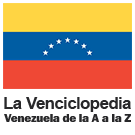Diferencia entre revisiones de «Tlc»
De La Venciclopedia
m (Texto reemplazado: «{{documentation}}» por «{{documentación}}») |
mSin resumen de edición |
||
| Línea 9: | Línea 9: | ||
-->{{#ifeq:{{{9|x}}}|{{{9|}}}| |{{{9}}} | }}<!-- | -->{{#ifeq:{{{9|x}}}|{{{9|}}}| |{{{9}}} | }}<!-- | ||
-->}}</code></span><noinclude> | -->}}</code></span><noinclude> | ||
{{documentación}} | {{documentación}}</noinclude> | ||
</noinclude> | |||
Revisión actual - 12:44 2 oct 2020
{{tlc|...}}
Nombre y propósito
Cuando se requiere poner una plantilla con llaves {{ }} en la documentación, las llaves deben escaparse de alguna manera para que no se lean como código. Al contrario de <nowiki></nowiki> la plantilla {{tlc}} lo hace más sencillo.
Esta plantilla funciona como {{tl}} y {{tlx}}, pero no enlaza el nombre de la plantilla. Evitar usar enlaces innecesarios en la documentación porque reducen la legibilidad, por lo que se recomienda usar {{tl}} or {{tlx}} en el primer enlace y {{tlc}} en el resto.
El nombre viene de {{tl}} template link, a pesar que al contrario de {{tl}} estas plantillas no incluyen un enlace.
Basic operation
The template looks like this (code is to the left; actual rendering to the right): {{tlc|name|parameters}} → {{name|parameters}}
Documentation
Functional details
- This template takes another template-name and some associated pipe-tricked (numbered) parameters (or 'pass parameters'), and displays them as an 'example demonstration' of how the template-name template could be coded, literally. Its primary use is in instruction and documentation.
- It shows a template name and up to eight parameters, including empty parameters.
- It prevents line wraps in its output.
Usage
{{Tlc|Template|first_parameter|second|third|...|eighth}} → {{Template|first_parameter|second|third|fourth|fifth|sixth|seventh|eighth}}
Examples
| Code | Result | Comment |
|---|---|---|
{{tlc}} |
{{tlc|...}} |
Shows its own syntax. |
{{tlc|name}} |
{{name}} |
|
{{tlc|name|one}} |
{{name|one}} |
|
{{tlc|name|one|two}} |
{{name|one|two}} |
|
{{tlc|name|a|b|c|d|e|f|g|h|i|j}} |
{{name|a|b|c|d|e|f|g|h}} |
Shows up to eight parameters. The rest are dropped. |
{{tlc|name|||three|four}} |
{{name|||three|four}} |
Also shows empty parameters. |
{{tlc|name|||three||}} |
{{name|||three||}} |
Even shows empty parameters that come in the end. |
{{tlc|name|one=a|two=b}} |
{{name}} |
The use of equal signs is a problem, but there is a fix; see next row. |
{{tlc|name|one{{=}}a|two{{=}}b}} |
{{name|one=a|two=b}} |
Use {{=}} in place of an equal sign, so that it gets rendered properly.
|
{{tlc|name|{{IPA|/tʃ/}}|two}} |
{{tlc|name|Plantilla:IPA|two}} |
Nested template calls also cause problems ... |
{{tlc|name|{{tlf|IPA|/tʃ/}}|two}} |
{{tlc|name|{{IPA|/tʃ/}}|two}} |
... but there are ways to get around this issue, also. |
{{tlc|name|{{((}}IPA{{!}}/tʃ/{{))}}|two}} |
{{tlc|name|{{IPA|/tʃ/}}|two}} |
... another way to do the same thing, using {{((}}, {{!}} and {{))}} to insert literal {{, | and }}, respectively.
|
An alternative to using constructs such as {{=}} and {{tlf|...}} to prevent characters from getting interpreted syntactically is to use <code><nowiki>...</nowiki></code>, which will prevent all characters from being interpreted. For example, in place of
{{tlc|name|one{{=}}{{tlf|IPA|/tʃ/}}|two}}
you can use
<code><nowiki>{{name|one={{IPA|/tʃ/}}|two}}</nowiki></code>
Both render as
{{name|one={{IPA|/tʃ/}}|two}}
If a vertical display with parameters on their own lines is desired, this can also be laid out manually in this manner, or more rapidly done with <pre>...</pre>.
Here is the code to emulate {{tlc}} using <nowiki>:
| Using templates: | Using <nowiki>: |
Rendered result: |
|---|---|---|
{{tlc|name|one{{=}}a|two{{=}}b}}
|
<code><nowiki>{{name|one=a|two=b}}</nowiki></code>
|
{{name|one=a|two=b}}
|
Limitations
The template arguments starting with one of the four MediaWiki magic characters : ; * or # are interpreted as if they were at the beginning of a line, and are formatted as HTML lists. To avoid this, references to {{*}} or {{#expr}} must have the first character escaped. You can either use <nowiki /> or an escape like #.
Los editores pueden experimentar en la zona de pruebas (crear) y en los casos de prueba (crear) de la plantilla.
Por favor, añade las categorías en la subpágina de documentación. Subpáginas de esta plantilla.
